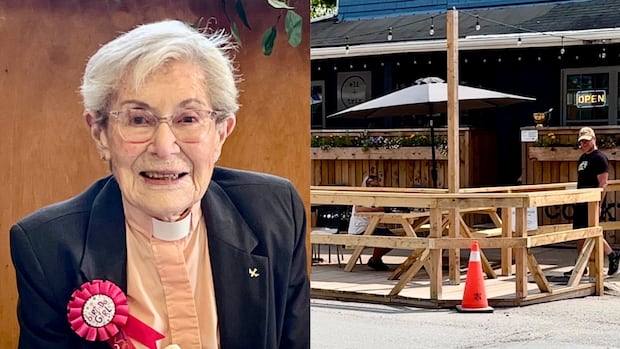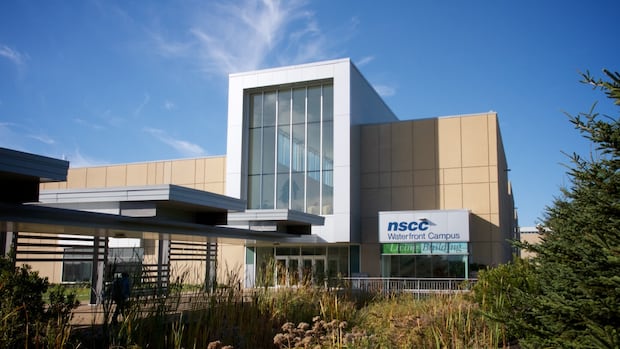Cell coverage a major concern in rural N.S., but what’s being done to fix it?

Everyone, from the deputy prime minister to the province’s emergency management minister, acknowledges poor cell coverage is a problem in many rural areas of Nova Scotia, and that something must be done to fix it.
But despite federal pledges to improve things, Sue Amberg is still in the dark about when, if ever, she will finally get a signal at her home on the Eastern Shore, even after speaking with her phone company and launching a local petition for better phone service.
She bristles every time emergency officials issue their preparation warnings before a hurricane or other extreme weather event, urging people to charge their cellphones ahead of time.
“What’s the point in having your phone charged when, what are you going to do with it?” said Amberg, who lives in Ecum Secum, located about 120 kilometres east of Halifax.
With more extreme weather events devastating Nova Scotia in recent years, people in remote areas of the province are experiencing first-hand the dangers of not having adequate cellular reception.
Last fall during storm Fiona, some Eastern Shore residents went 30 days without phone or cellphone service.
Last month, during historic flooding that claimed the lives of four people in West Hants, officials said there was inadequate cell reception. This contributed to a nearly two-hour delay in sending out an emergency alert to the public, according to Mark Phillips, chief administrative officer of the Municipality of West Hants.
Days after the flood, Deputy Prime Minister Chrystia Freeland said it’s “unacceptable” for people not to be able to get emergency alerts due to poor cell coverage.
She said she would be raising the issue “urgently” with the Canadian Radio-television and Telecommunications Commission, telecom companies and federal Industry Minister Francois-Philippe Champagne.
Champagne’s office did not respond to a request for a comment by CBC News.
In an email, a spokesperson for the CRTC told the CBC that the federal regulator is “concerned about cellular coverage, especially where there are network gaps potentially impacting the safety of Canadians.”
The statement pointed to the broadband fund as a way the group is working to improve cellular coverage; however, it didn’t respond to the question of what is being done to help remote areas of Nova Scotia.

While Bell Aliant announced last week it is spending $20 million across Atlantic Canada to improve service during storms, the phone company would not tell CBC whether any of this investment would go toward improving coverage in rural Nova Scotia.
Stacy Barnes, the guest services manager at Liscombe Lodge, said dozens of people have signed the petition at the Eastern Shore resort, including guests who come from out of town and are shocked to learn that they can’t use their phones during their stay.
“We’ve had guests that arrive, they find out there’s no cell service, they have to leave because they have medical conditions and they have to be able to get ahold of their family, or they’re away from their kids and they all of a sudden can’t call their kids,” she said.
Barnes said she’s always nervous about what to do in an emergency situation. Landline service goes down when the power goes out. Phone coverage is “terrible” and “practically nonexistent.”
“When all of a sudden you can’t make that phone call from a landline or cell service, you get that sometimes panicky feeling that you’re isolated and if something happens, no one’s going be there to help you,” she said.
At a hurricane preparedness meeting held by the province on Thursday, John Lohr, the minister responsible for the Emergency Management Office, acknowledged that better coverage is needed, but told reporters that telecom services are a federal responsibility managed by the CRTC.
“As far as the province goes, I mean, it’s very difficult for us to change the arrangement of cellphone towers or step into things like that,” Lohr said.

When asked what the province is doing to ensure that people in remote areas have adequate service during storms, he said: “Ahead of the hurricane season, we’re asking people to prepare. For individuals in rural parts of the province, that means being prepared to have backup power for their cellphone charging, whatever that looks like.”
On Friday, the Nova Scotia Liberals issued a statement calling on the Nova Scotia government to release a report on cell-service gaps in rural Nova Scotia. The statement said the Crown corporation Build Nova Scotia declined to release the report last November, and that it’s been “hidden” ever since.
Build Nova Scotia said the report is still under review, as of Monday.
When Amberg moved to the small community of Ecum Secum 10 years ago, she figured it would only be a matter of time before the reception improved. But she said that hasn’t happened. She uses an internet-protocol phone that plugs into her internet in order to make calls from her house.
She hopes her petition, which now has about 200 signatures, will help to shed more light on the issue, but wonders how long it will take for officials to take action.
“Why should I be so limited when I’m paying the same as everyone else is paying? So in that way, you know, I am forgotten,” Amberg said. “And everyone else [in the community] will say the same thing. It’s just not fair at the end of the day.”



